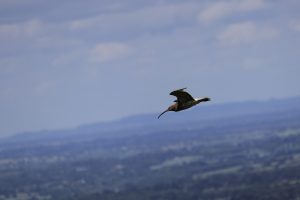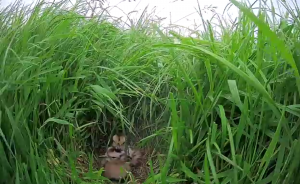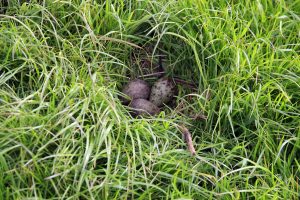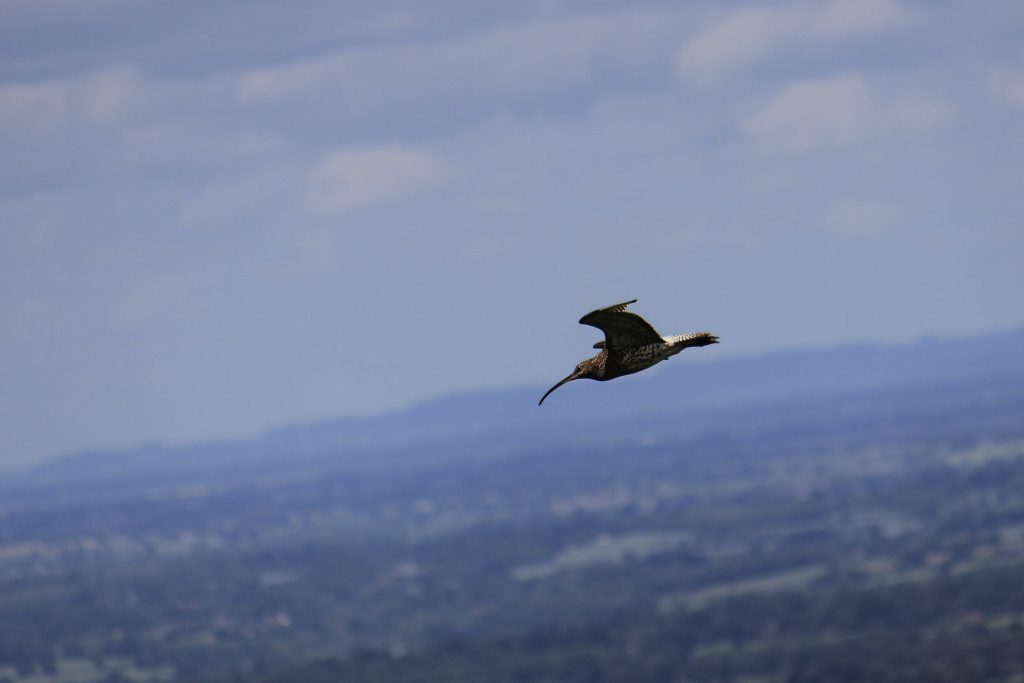
As we fast approach lambing time here in the hills, we are hearing Curlew arrive and pair up looking for a spot to begin to settle . We currently have 4 pairs chatting and soaring in the sunshine and the sight is like something from a postcard; blue skies, green fields, mesmerising birds and NO RAIN!
Though we notice the birds appearing and landing on to the heeling ground, many people aren’t aware of the birds, or even know what they are; the objective of this piece, is to summarise in brief what a Curlew actually is!
I ran a little series of questions on my personal Instagram account, asking 3 blocks of questions which required short explanatory answers:
- Would you be able to distinguish a Curlew? How would you describe one?
To this, the most common answer was ‘no’, but some did know it was a bird. Three people knew it was a ground nesting bird and that it is a browny colour, two of whom said they only knew because they had read previous blogs I had done but before that didn’t even know a curlew was a ‘thing’.
To answer simply… A curlew is a brown bird with a very long, curled down bill, skinny, tall legs and has a distinctive call (sound)
- Do you know where a Curlew would choose to a) nest, b) feed?
The general answer was that Curlew nested in trees and fed off the ground.
Answering simply… in an ideal world a Curlew will find a spot to nest on flat ground with grassy cover and feed from nearby, damper land, usually with a good, crumbly soil structure, that is full of worms.
- To your knowledge, what is the main threat to successful breeding of the Curlew?
The majority of people answered that building and development would be the main threat to the Curlew being successful in their breeding. The two biggest threats are predation and clashes with agriculture – lots of nests are accidentally destroyed by harrowing and rolling and chicks are accidentally mown. Ground-nesters are really vulnerable.
So, in bullet point and to simplify a Curlew:
~ A large bird (Britain’s largest wader)
~ Nests and raises chicks on the ground
~ Feeds on the ground
~ Brownish feathers (plumage)
~ Lanky legs
~ Very long bill, curving downhill
~ Lays a handful of pear shaped, speckled brown eggs (3/4/5)
~ Exceptionally lives for up to 25 years
~ Native Breed
~ Spend winters at the seaside (estuaries/mudflats/coastal areas)
Click here and press the button on the strapline at the bottom of the page to hear a curlew’s call.
 I hope this can help anyone that is interested! I also hope I have got the basic facts right as this is my opinion and what (I think) I know, without researching to help keep in simple!
I hope this can help anyone that is interested! I also hope I have got the basic facts right as this is my opinion and what (I think) I know, without researching to help keep in simple!
Now that the weather is finally kinder, I have been able to get back to farm work with my girl-gang in tow (I don’t have much option but to have them with me with the country on strict isolation)! I feel so lucky that I am able to get out and work and in open space, completely away from anyone else! It is absolute bliss, given recent measures! I really feel for those who are unable to be out, properly enjoying the weather this week and the fact many have spare time with kids of school and absolutely nowhere to go. For a little change, I will below include a few Curlew/Farm related activities to maybe buy you five mins of peace from bored kids… hope it helps!
Stay Safe all…
1. EASY FEATHERED BIRD PICTURE
Kids love working with feathers!
Print out or draw a picture of a bird onto construction paper.
Spread glue onto the bird. Glue assorted feathers onto the bird…
2. BIRD FEEDERS
Punch holes on either side of a plastic pop bottle.
Stick a twig all the way through with its ends sticking out for perches; poke more holes nearby for the birds to pull the seeds out.
Hang the bottle by tying a string around its neck.
3. HOMEMADE BIRD BALLS
1 pound of lard
3 spoons of peanut butter
6 cups oats
2 cups sunflower seeds
2 cups raisins
Mix everything together (this will be nice and messy!).
Roll into about 5 or 6 small balls.
Roll balls in sunflower seeds and raisins.
Place the balls in a bird feeder and watch your feathered friends enjoy their snack. Birds, squirrels and other small wildlife are in constant search of food, fresh water and safe shelter.
Click the links below for some printable colouring pages:

